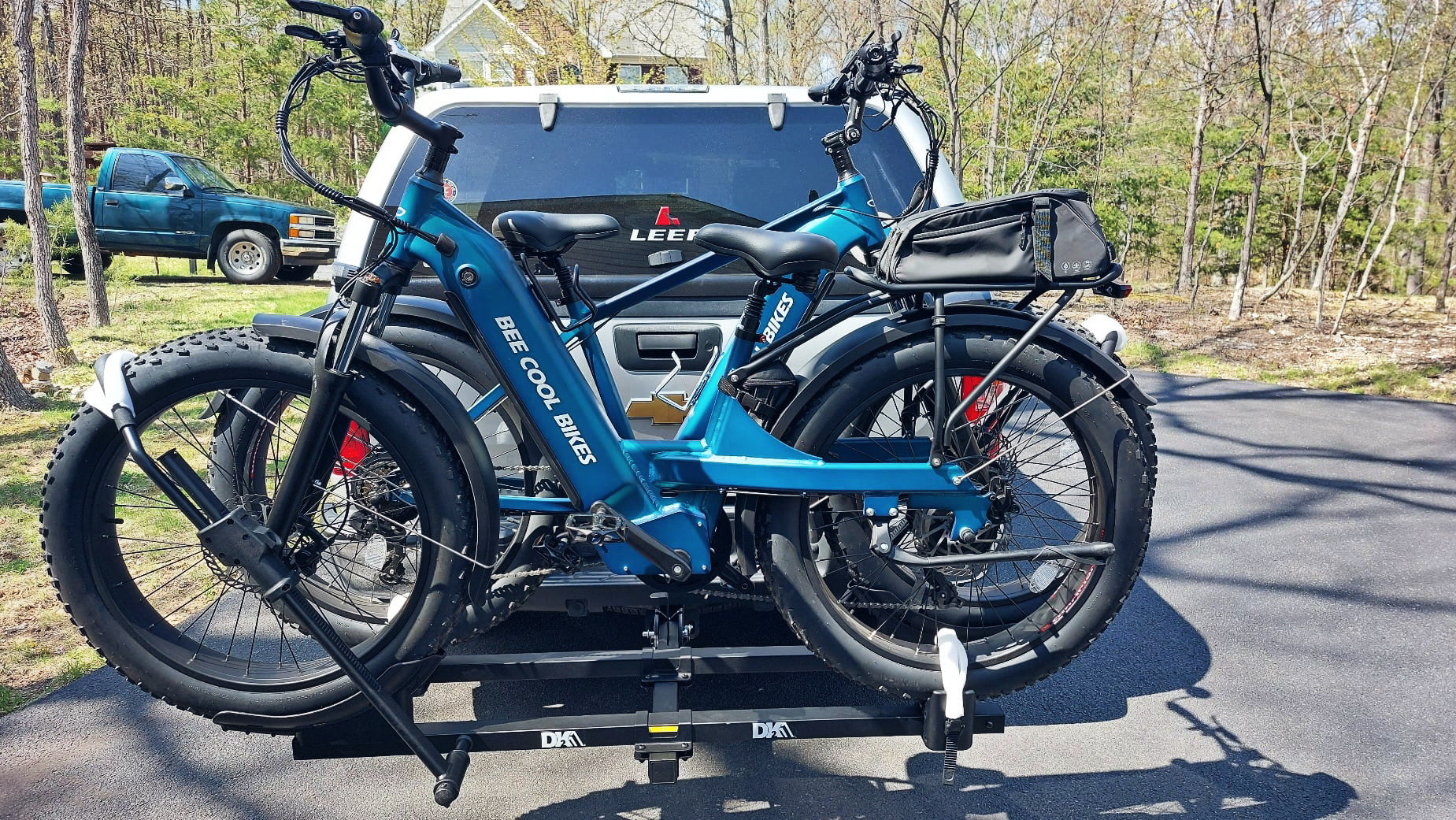
As e-bike technology continues to evolve, these increasingly capable machines are opening up new realms of possibility for long-distance travel and outdoor exploration. One travel trend that has gained significant momentum in recent years is the so-called "4+2" approach - using a vehicle (the "4") to transport both riders and gear, then deploying e-bikes (the "2") at the destination for local mobility and adventure. This hybrid model allows adventurers to cover vast distances efficiently while still enjoying the freedom and flexibility of electric two-wheelers once they reach camp.
But how can e-bike riders truly optimize this "4+2" travel lifestyle? Drawing on the latest advancements in e-bike design and components, there are several key strategies riders can employ to get the most out of their e-bike adventures.
Extending E-Bike Range for Longer Rides
One of the primary challenges facing e-bike riders on extended trips is managing battery life and range. As riders venture further from their vehicle base camp, the need for reliable, long-lasting battery power becomes paramount. Fortunately, e-bike technology has made tremendous strides in this area in recent years.
The latest generation of high-capacity, long-range e-bike batteries can now deliver 60-80 miles or more of pedal-assist riding on a single charge. Models like the Bee Adventurer/Pathfinder and the Bee Challenger/Ranger offer impressive real-world ranges that can easily accommodate daily e-bike excursions from a remote campsite. And for those seeking even greater autonomy, some e-bike batteries are now hot-swappable, allowing riders to carry spare cells and quickly exchange depleted packs for fresh power on the go.
In addition to beefier batteries, strategic charging techniques can further extend e-bike range. Riders can maximize battery life by paying attention to factors like terrain, pedal assist levels, and regenerative braking. Strategically using the bike's lower assist modes on flatter sections, for example, can preserve battery for steeper climbs. And taking advantage of regenerative braking - which captures energy during deceleration to recharge the battery - can provide an invaluable boost, especially on long, winding descents.
Outfitting E-Bikes for Camping and Adventure
Of course, extended e-bike adventures don't just require ample battery life; riders also need to ensure their machines are properly equipped to handle the rigors of off-road travel and camping. Fortunately, the e-bike accessory market has exploded in recent years, giving riders a wealth of options for customizing their rigs.
Sturdy, shock-absorbing suspension fork & rear suspension are a must for tackling mixed terrain, smoothing out rutted forest roads and rocky singletrack. For added comfort and control, riders may also consider upgrading to wider, knobby tires better suited for loose, unpaved surfaces. And for those seeking maximum cargo capacity, various rack, trailer and pannier systems allow e-bikes to haul impressive loads of camping gear, food, and other supplies.
Beyond the bike itself, savvy "4+2" adventurers may also want to invest in accessories like weatherproof handlebar bags, frame-mounted storage, and even small motorcycle-style saddlebags. These storage solutions allow riders to distribute weight and keep essential items close at hand without compromising the bike's agility.
And when the e-bike journey comes to a halt at the campsite, riders can leverage a range of power management tools to keep their machines - and their other gadgets - charged and ready for the next day's exploits. Portable power banks, solar chargers, and even supplemental e-bike batteries can ensure a reliable flow of electricity, even in remote, off-grid locations.
Optimizing the "4+2" Travel Workflow
Of course, successfully blending e-bikes and long-distance travel isn't just about the equipment - it also requires careful planning and a strategic approach to the overall "4+2" workflow. Seasoned adventurers have developed a range of techniques to streamline this hybrid travel model and maximize its benefits.
One key consideration is how to most efficiently transport both the vehicle and the e-bikes. Depending on the size and weight of the e-bikes, riders may opt for hitch-mounted racks, roof-top carriers, or even tow-behind bike trailers. The goal is to minimize the overall footprint and weight, ensuring the vehicle can still maneuver easily and maintain good fuel economy.
Once at the campsite, the process of transitioning from the vehicle to the e-bikes must also be carefully choreographed. Riders may want to pre-plan their daily e-bike routes, mapping out key waypoints and points of interest. This allows them to efficiently deploy the e-bikes without wasting time or energy on unnecessary exploration. And by keeping the e-bikes charged and ready to go, adventurers can maximize their time in the saddle, rather than dealing with dead batteries.
Of course, no "4+2" adventure plan is complete without a backup strategy. Riders should always have contingencies in place, whether it's a spare e-bike battery, a bicycle repair toolkit, a EV Station Charging Adapter or even a folding electric scooter to supplement the main e-bikes. The goal is to anticipate and mitigate potential issues, ensuring the journey remains as smooth and carefree as possible.
Ultimately, the key to getting the most out of the "4+2" travel lifestyle is to approach it with the same level of planning and preparation as any other outdoor adventure. By carefully selecting the right e-bike equipment, managing power and charging, and optimizing the overall workflow, riders can unlock a new level of freedom, flexibility, and exploration on the open road - or trail.


